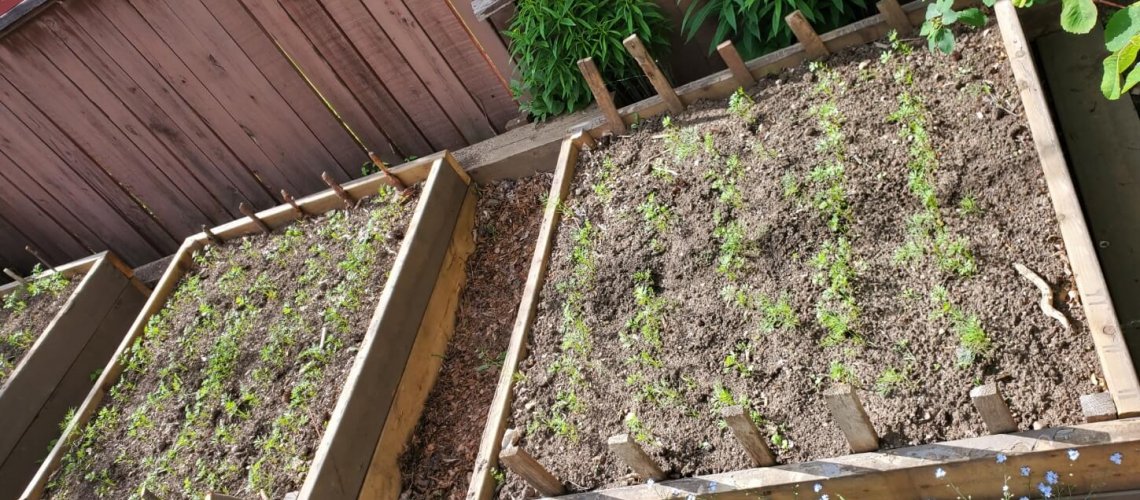What is a Raised Garden Bed?
A raised bed contains soil that is higher than the original ground level. I prefer a raised bed enclosed by a frame of two-inch-thick untreated lumber. Ideally, there should be at least a depth of 16 to 18 inches of soil. The deeper the soil, the more room your plants have to grow. Vegetables in an 18-inch depth of garden soil grow longer roots than those planted in the traditional 8-inch garden soil. Longer roots result in larger vegetables.
Raised beds have three main advantages over the traditional garden.
Reduces Soil Compaction
First, you only walk on the path between the beds, thereby avoiding compacting the soil where your plants are growing. Compacted soil reduces the amount of air and water in the voids between soil particles, resulting in stunted plant growth and smaller vegetables. In three of my raised beds, I use a no-till method, saving a considerable amount of time and effort in spring planting.
Easier to Weed
Secondly, I can weed and thin at any time, even when it is raining if I am so inclined.
Planning Crop Rotation
Thirdly, it is much easier to plan my crop rotation. I have four large raised beds and rotate my carrots, beans, potatoes, and brassica (cabbage turnips, kale, and kohlrabi) on a four-year rotation. Also, raised beds are visually neater.
Constructing Raised Garden Beds
I use a simple method of constructing my raised beds. Depending on the height I want, I use two levels of either 2” x 6” or 2 x 8” untreated lumber (old decking boards may also be used) giving a depth of 12 to 16 inches of soil plus the black soil below the raised bed.
The boards are simply screwed together. The length of the bed will vary depending on the location. Some of mine are 20 feet long, others 4 feet. See the picture of two of my raised beds. Of course, you can be fancy with concrete block sides or even corrugated steel sides. I provide a 16-inch wide path between each raised bed.
Once the bed is in place, if necessary, I loosen the soil below the bottom of the raised bed to make it easier for the plant roots to work their way down. If the raised bed is placed on grass, I would start with a layer of cardboard first, then add layers of kitchen scraps, grass, or leaves, alternating with garden soil. If placing it in the garden, I also layer compost, grass, leaves, etc. between the layers of garden soil. And if possible, after a rain, I will collect some earthworms and add them to the mixture.
In summary, I estimate that I spend approximately half the time with raised beds than I would with the traditional method of gardening and get twice the results. This includes being able to weed immediately after a rain when the soil is soft and the weeds pull out easily.

Recent Comments